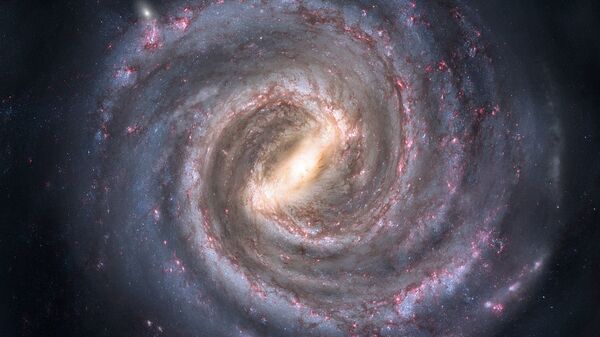An international team of scientists from Britain, Germany, and the United States has discovered what they called the oldest and the largest galactic merger in the history of the Milky Way. The researchers used a computer simulation to analyse globular clusters, a spherical collection of stars which orbit a galactic core. Astronomers say these clusters are fossils of ancient galaxies that our Milky Way swallowed up in the past.
According to the findings of the study, published in the October issue of the journal Monthly Notices of the Royal Astronomical Society, the researchers discovered evidence of five galactic mergers, with each merger involving 100 million stars or more. The scientists say that among the five, there was one ancient galactic merger that hadn’t been documented before. It turned out to be the biggest and the oldest collision of galaxies. Because of its impressive size, the scientists dubbed the merger "Kraken", after the mythical sea monster.
"The collision with Kraken must have been the most significant merger the Milky Way ever experienced", the study's lead author Diederik Kruijssen, an astronomer at the University of Heidelberg in Germany, said in a statement. "The merger with Kraken took place 11 billion years ago, when the Milky Way was four times less massive [than today]. As a result, the collision must have truly transformed what the Milky Way looked like at the time".
The discovery will not only help scientists create a family tree for the Milky Way, it will also shed light on what our galaxy looked like in its earliest days. The scientists say that it is likely Kraken is only a small piece of the galaxy formation puzzle and that at least 15 other galactic mergers could have occurred with our galaxy.
"The debris of more than five progenitor galaxies has now been identified. With current and upcoming telescopes, it should be possible to find [evidence of] them all", Diederik Kruijssen.
According to LiveScience, the researchers have about 3 or 4 billion years to find all the mergers before the Milky Way collides with the neighbouring Andromeda galaxy, currently located some 2.5 million light-years away from us.



